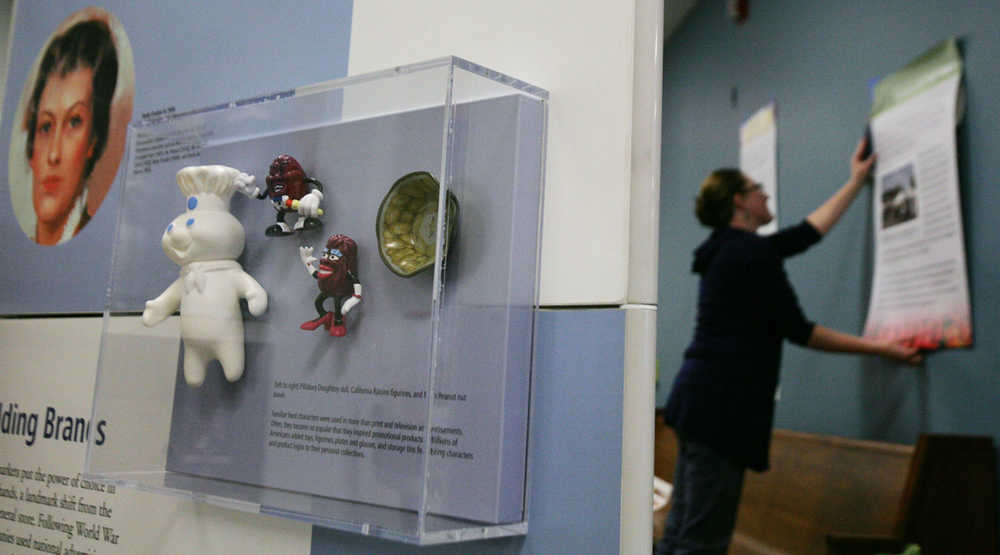FAIRBANKS, Alaska (AP) — If you’re planning to stroll through the lobby at the University of Alaska Fairbanks Community and Technical College in the next month or so, it might be good to have a snack first.
CTC is hosting a traveling exhibit, “Key Ingredients: America by Food,” at its main building at 604 Barnette St. Visitors will get a glimpse into the history of Memphis barbecue, Chicago deep-dish pizza, nachos and a variety of other foods that have contributed to the country’s culinary history.
“Key Ingredients” is a traveling exhibit from Smithsonian Institutions, which presents museum-quality pieces to small or medium-sized U.S. cities. It’s the final stop in Alaska for the exhibit, which has already traveled to Homer, Palmer and Talkeetna.
The University of Alaska Museum of the North is presenting the exhibit, which explores how culture, geography and tradition influence American meals.
“The food we eat is influenced by where we live and what’s available and who lives there,” said Steve Bonta, the museum’s coordinator of exhibition and design.
The exhibit, which is comprised of three series of folding panels, arrived last month in 15 crates at the Museum of the North. Without room for a new display at the museum, CTC agreed to host the exhibit through Nov. 22.
Those who check out the exhibit will get a primer on popular American foods and how they’re consumed. There are also food-related displays that include Thanksgiving, eating out and the art of hospitality. It even includes a set of foam “cheeseheads,” in both adult and child sizes, that people can try on to imitate Wisconsin’s dairy-crazed football fans.
A program with the exhibit includes some food trivia and classic American recipes.
The exhibit also includes several local components. A video will share Fairbanksans’ local food stories, captured at the Downtown Market and a handful of local community-sponsored farms. An accompanying Alaska-themed food exhibit will be at the UA Museum of the North cafe, where a display from the history collection will include desiccated eggs, original ice cream containers from the old Creamer’s Dairy and a gold rush-era coffee tin.
The museum will also present a handful of food-themed family programs during October, including a family day on Oct. 11 that explores the culture, art and science of food.

